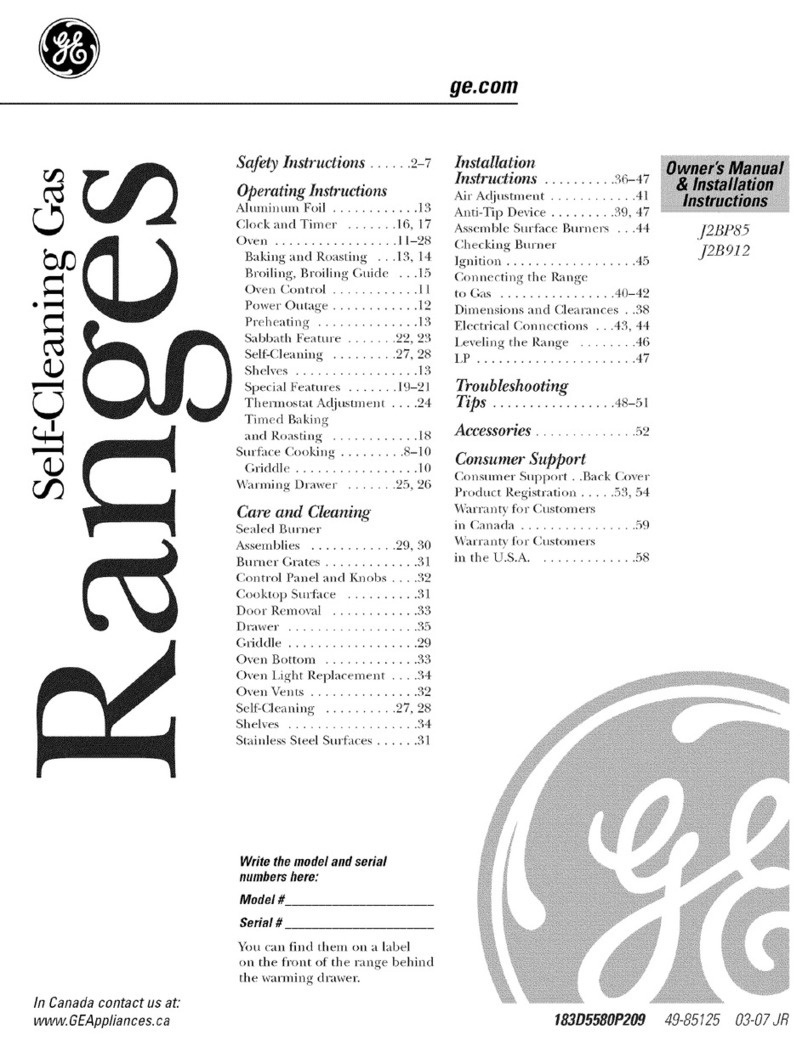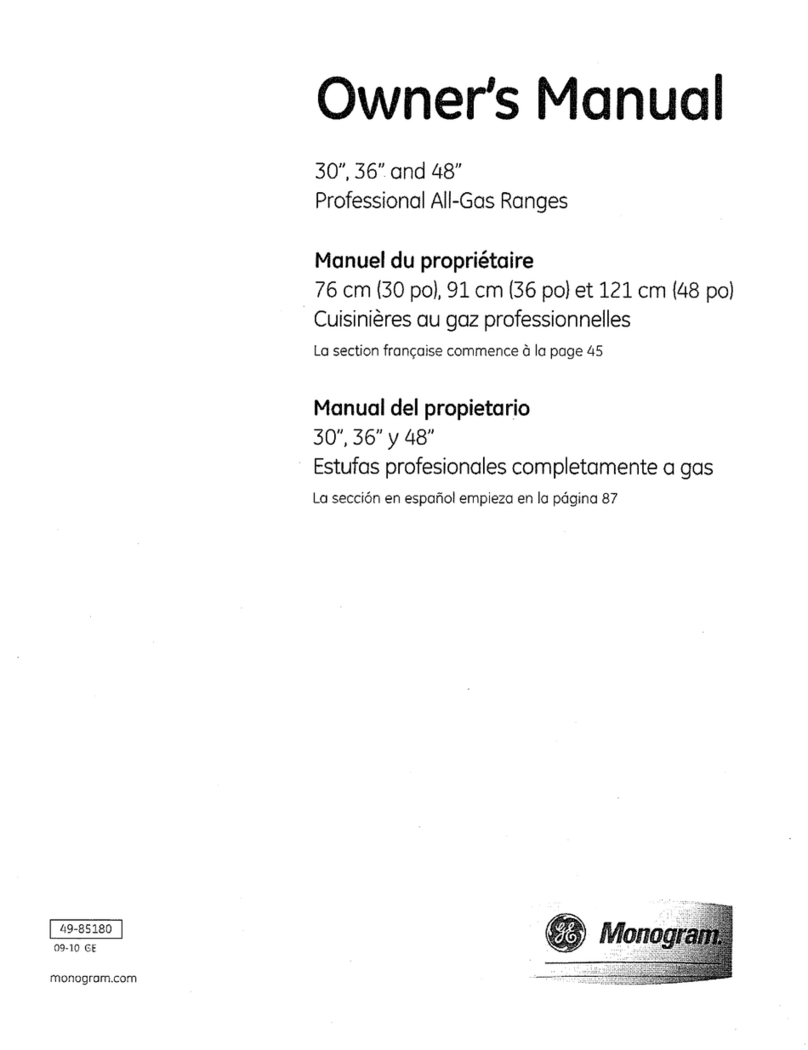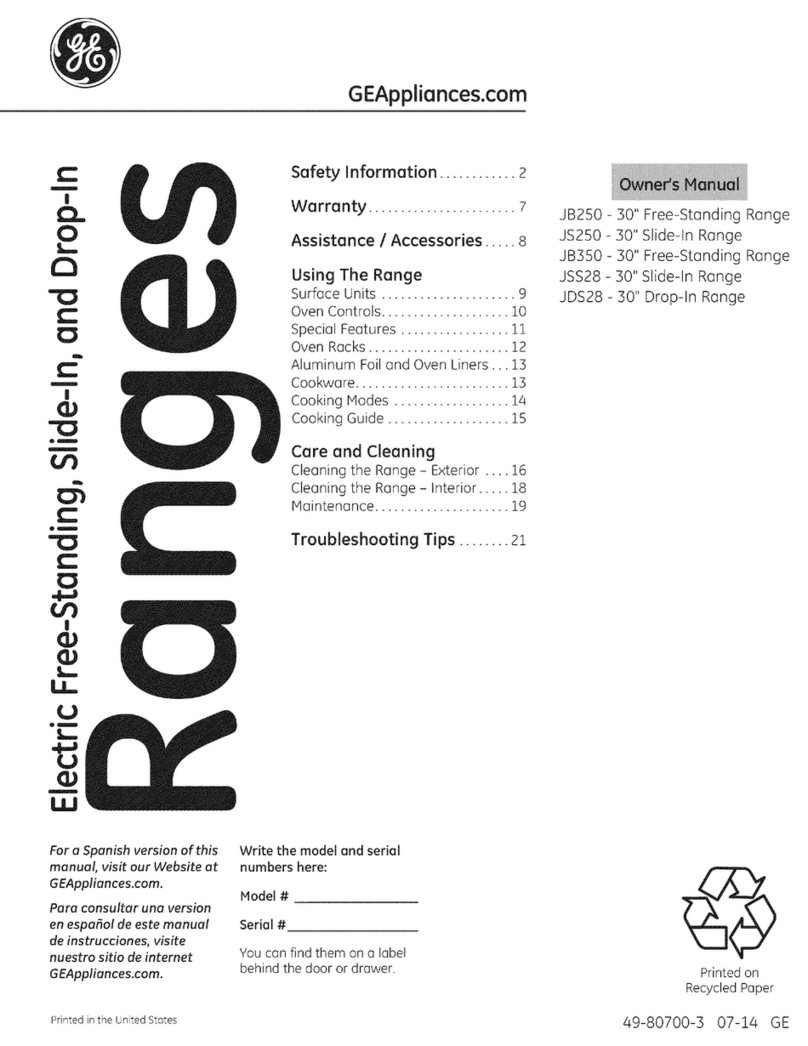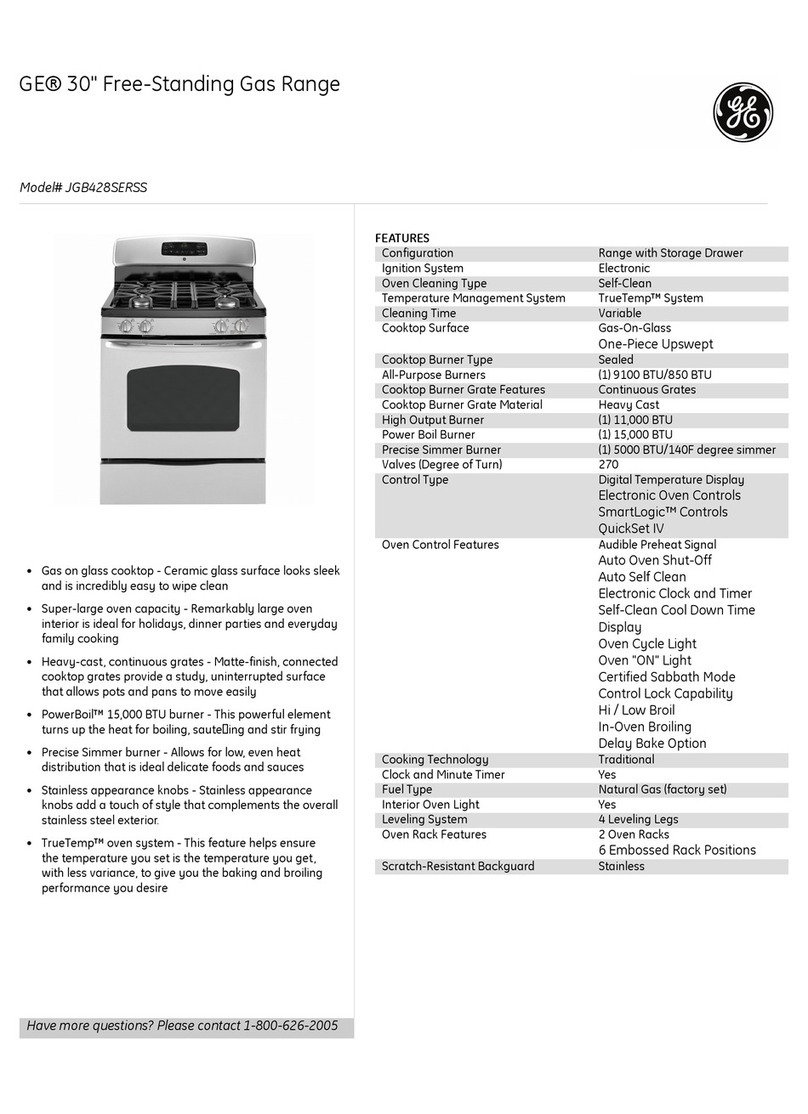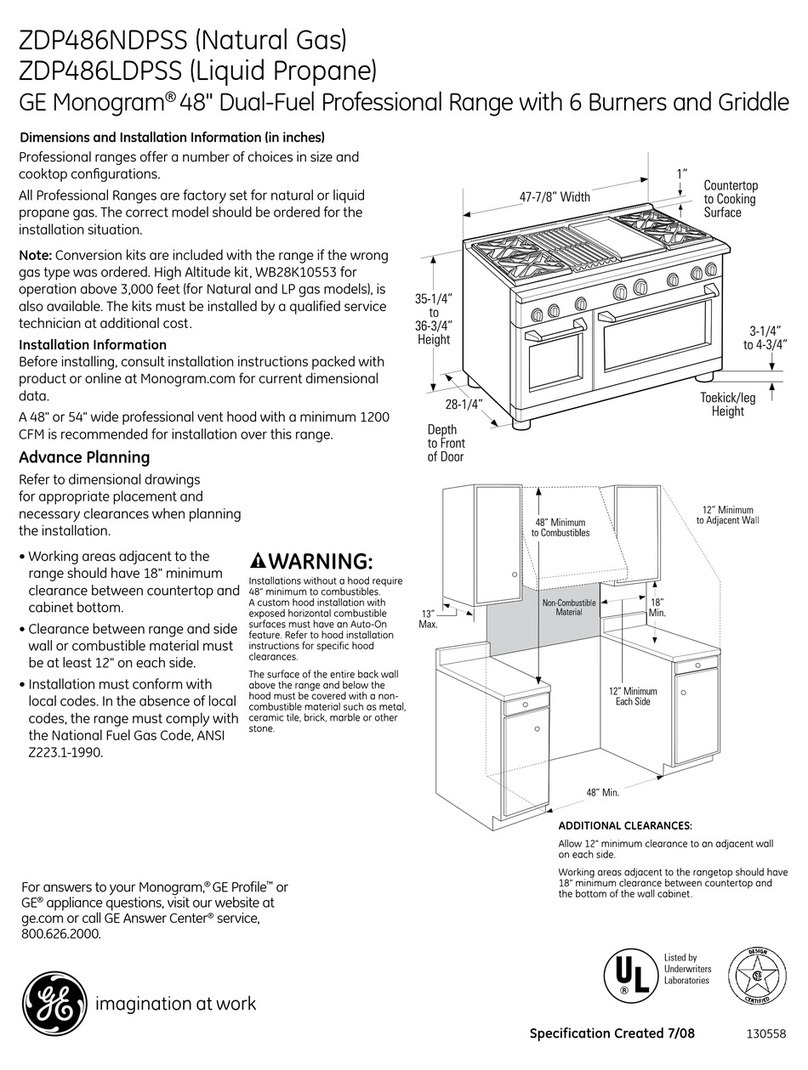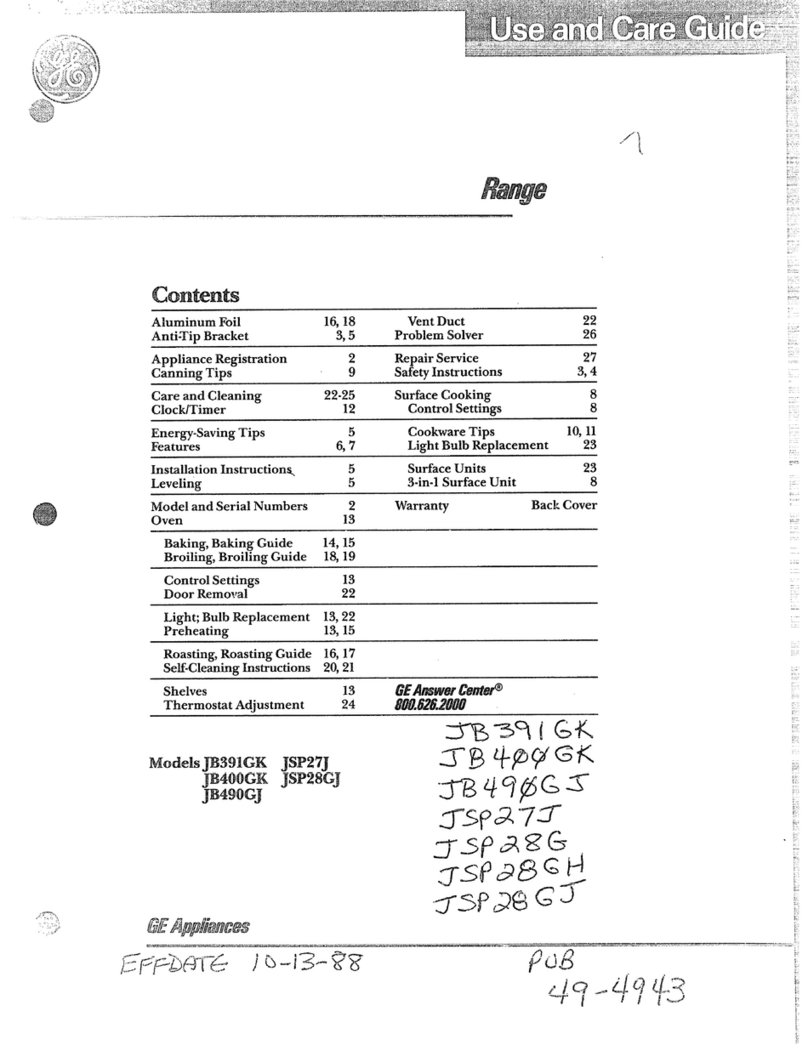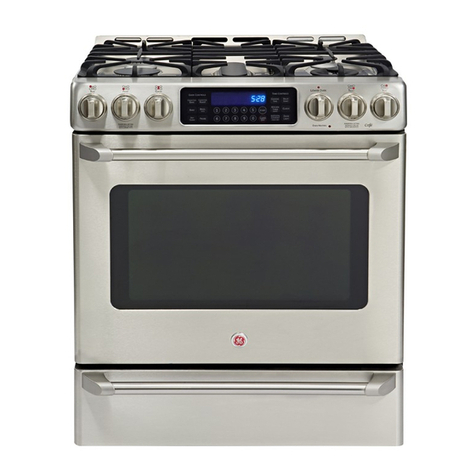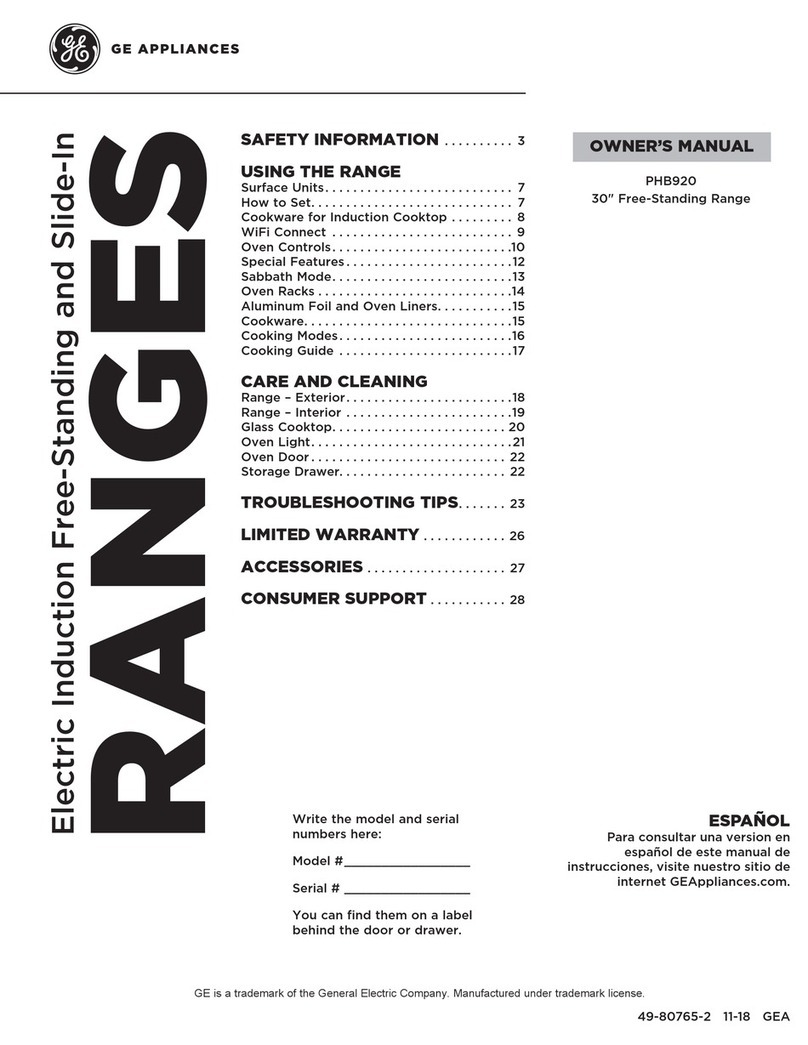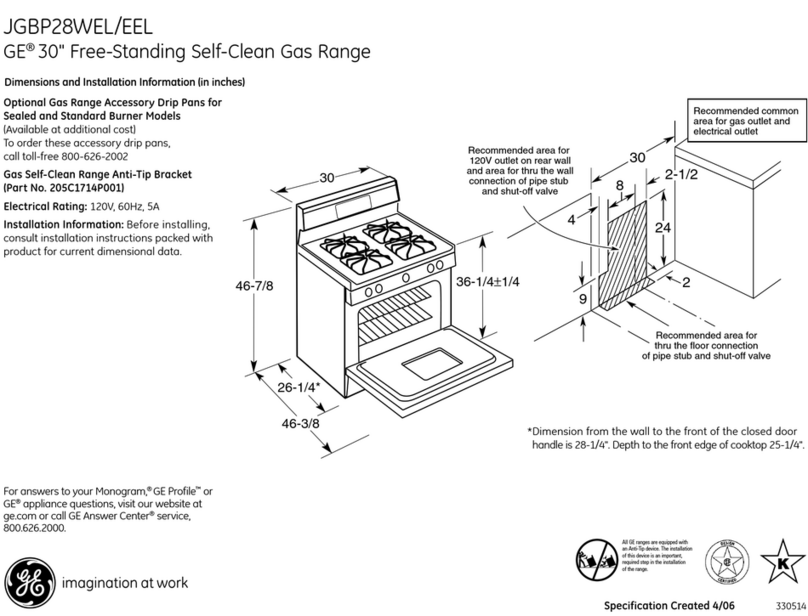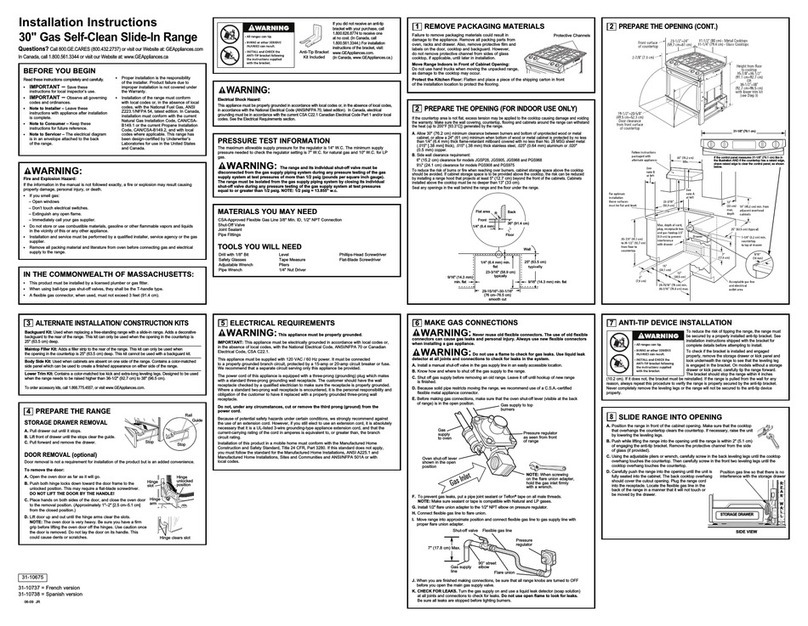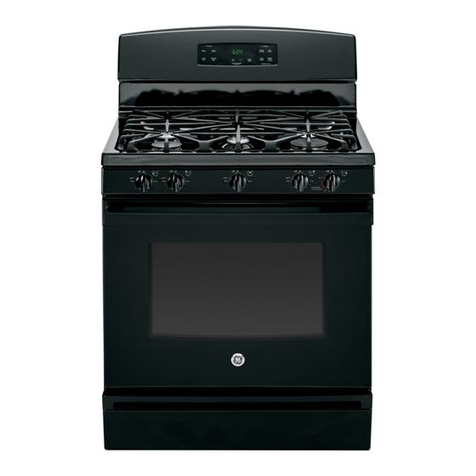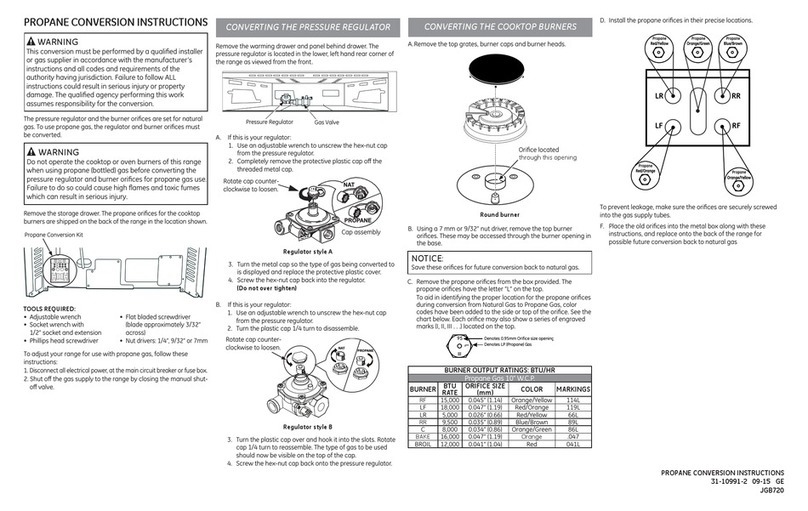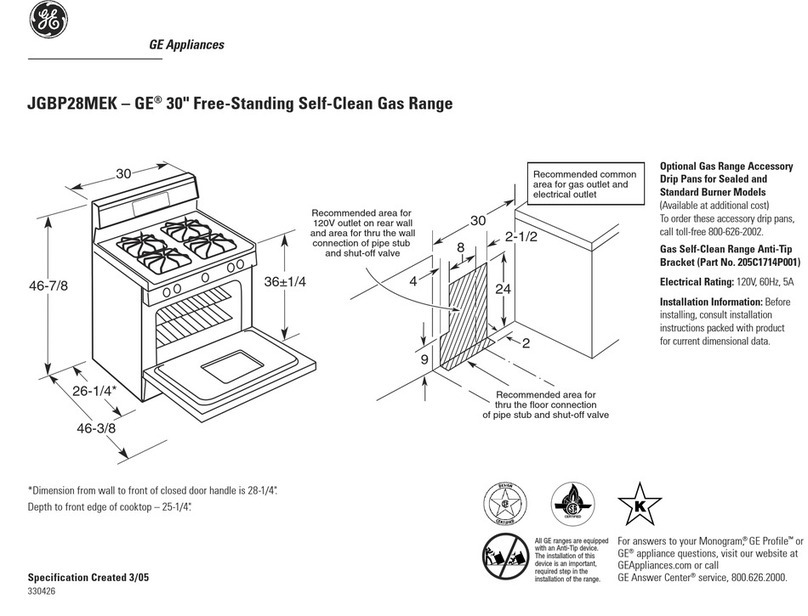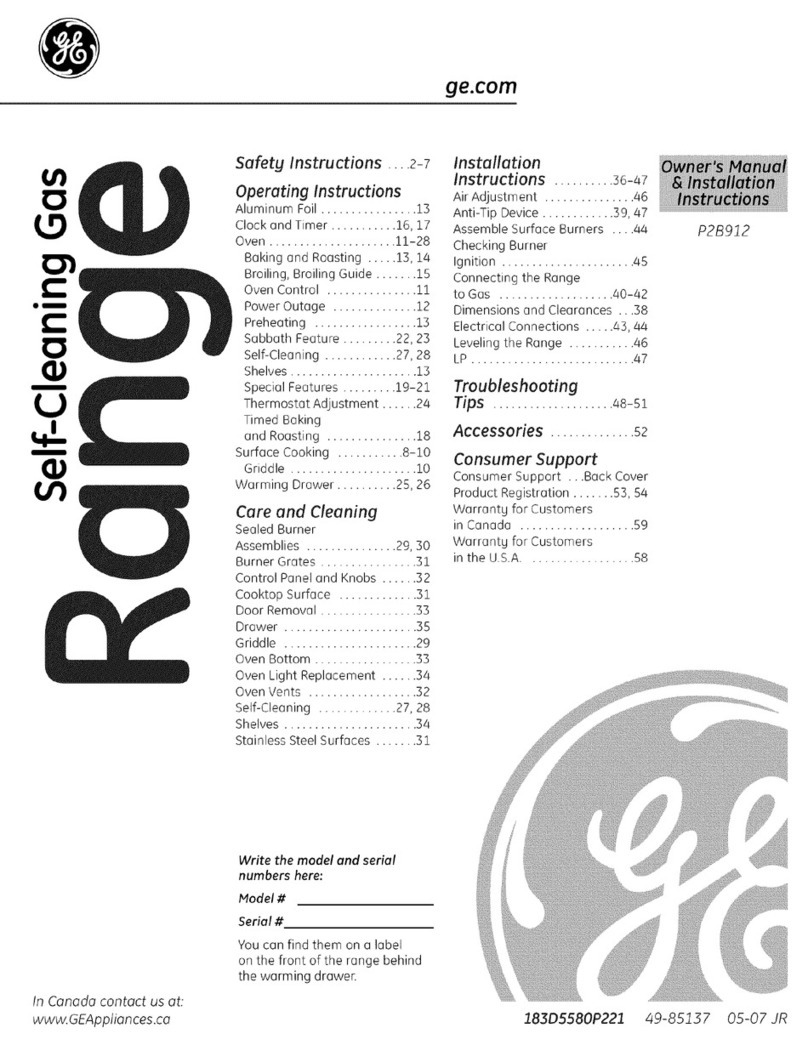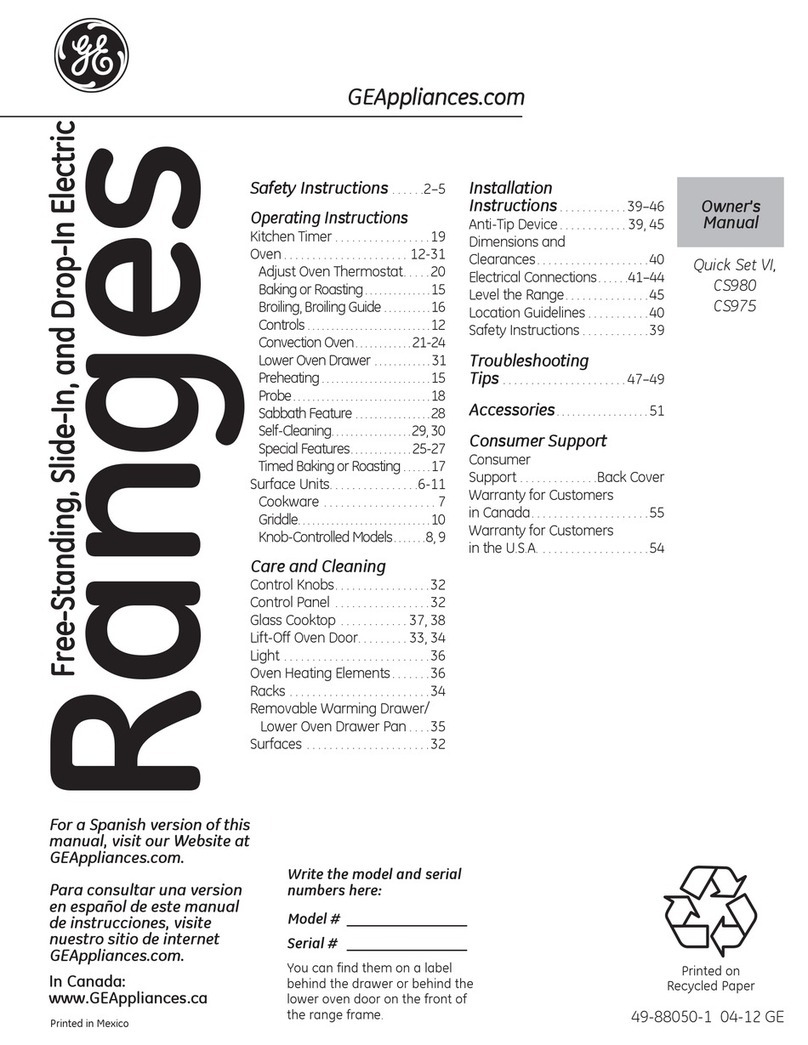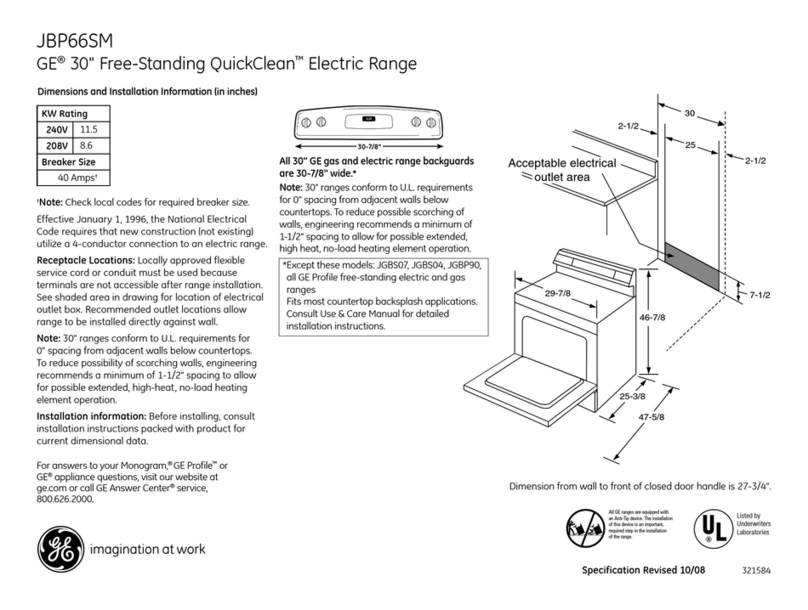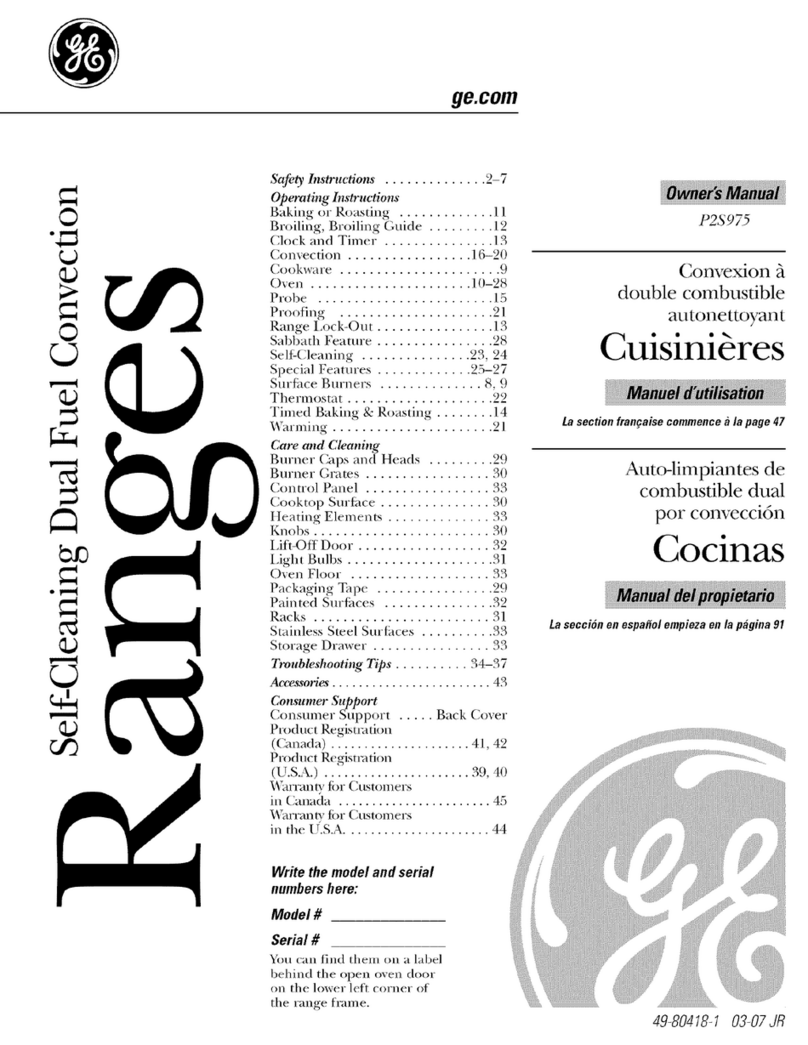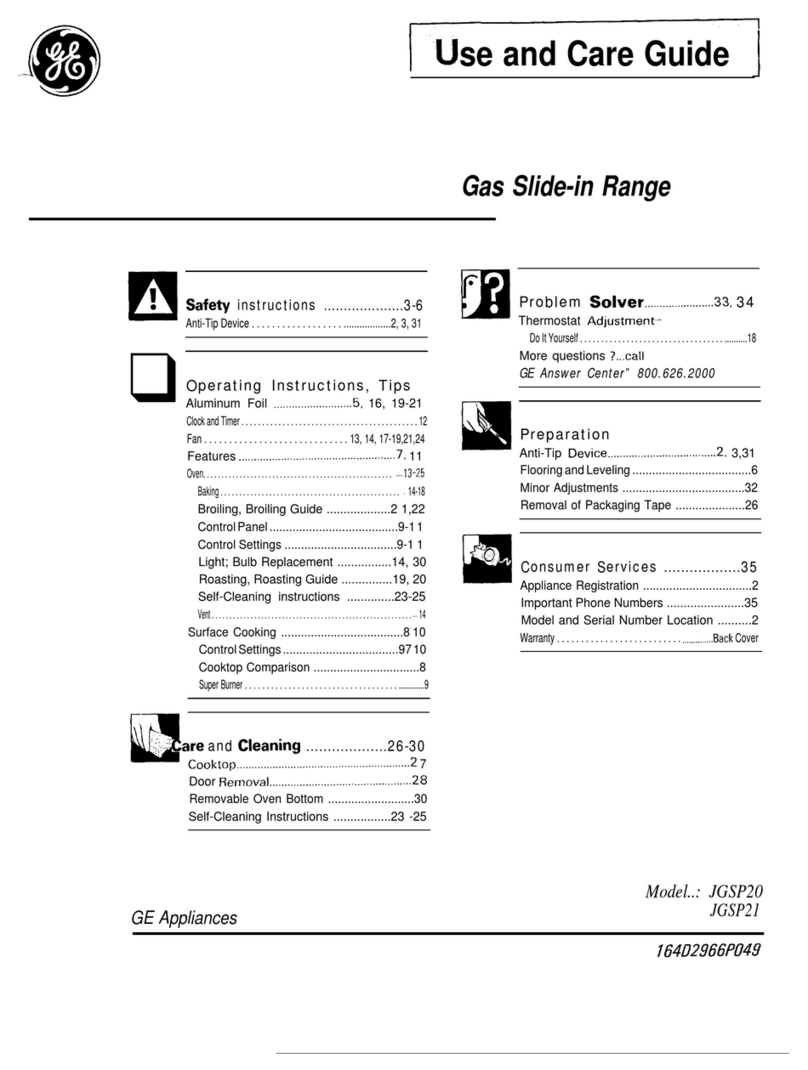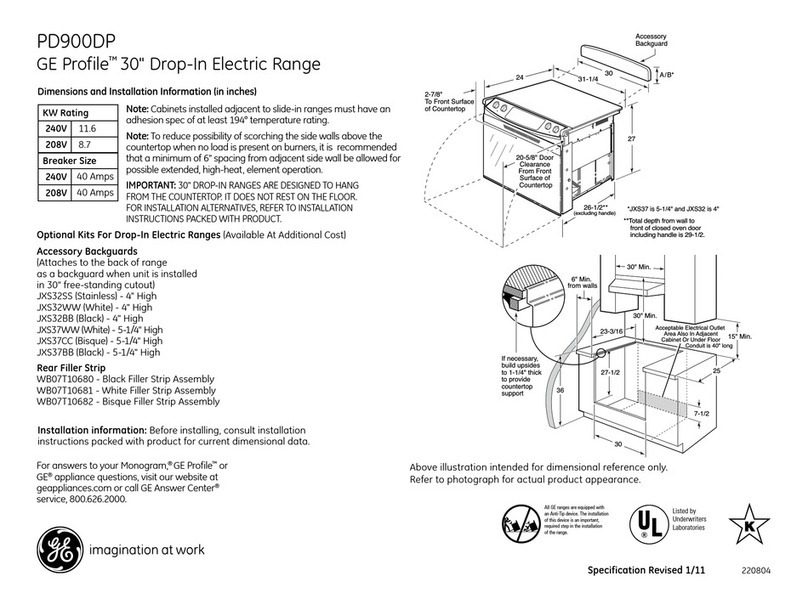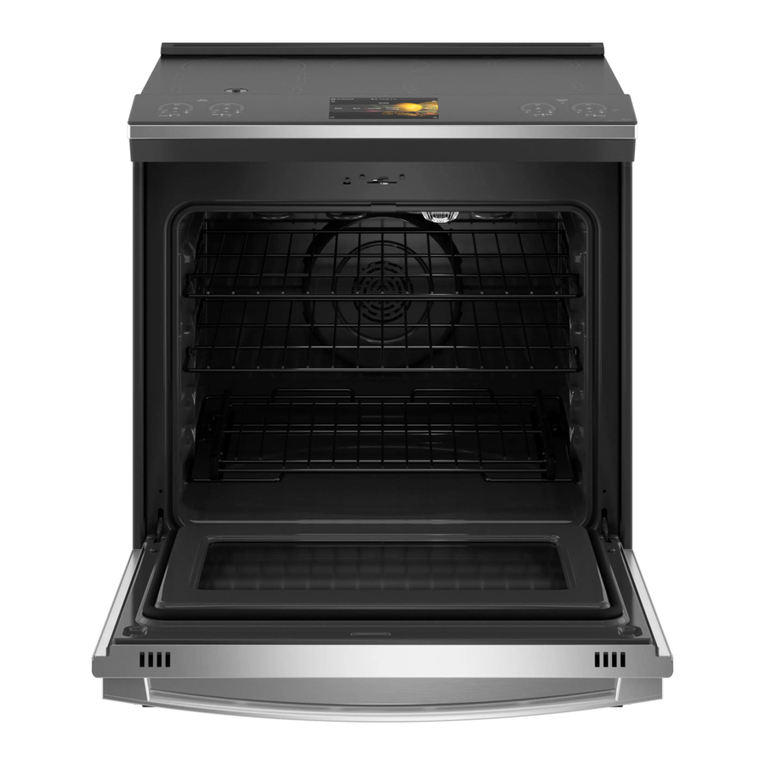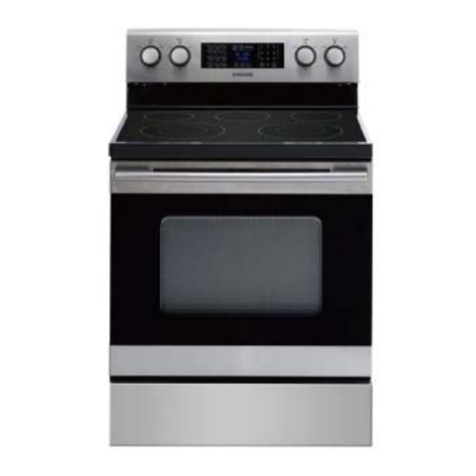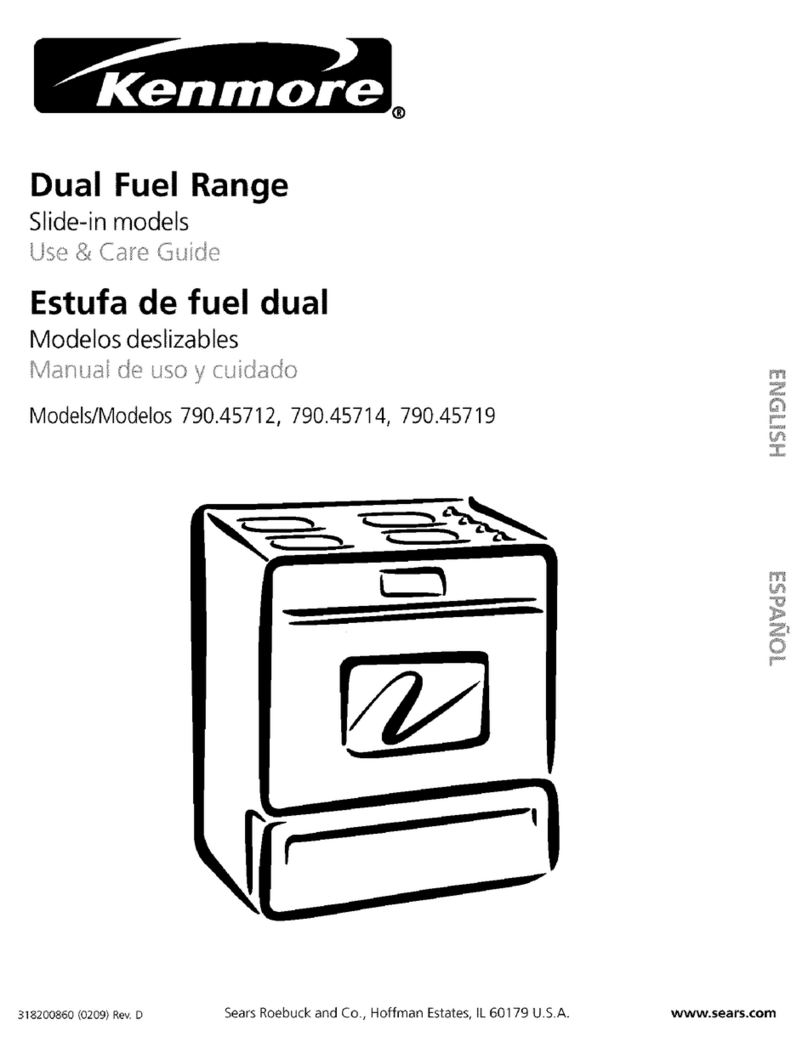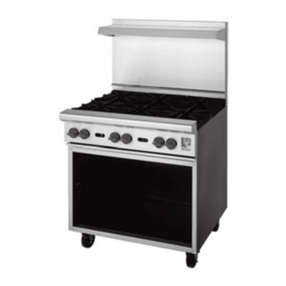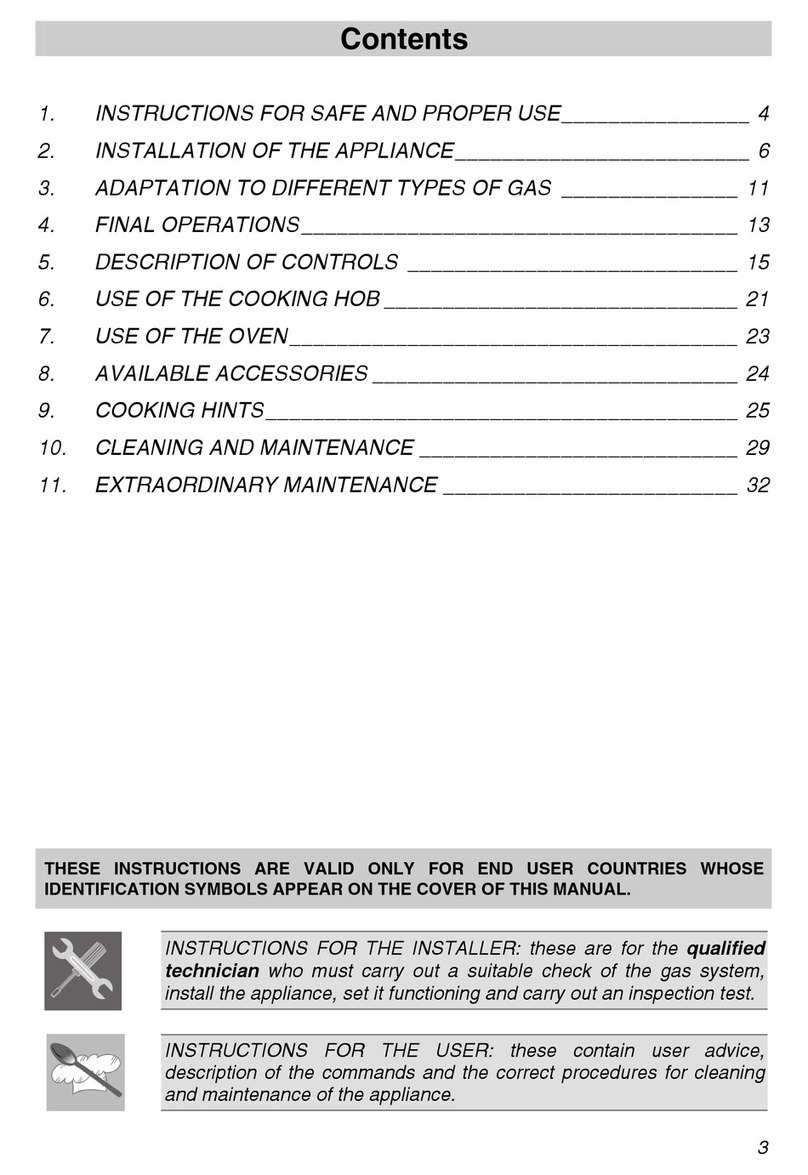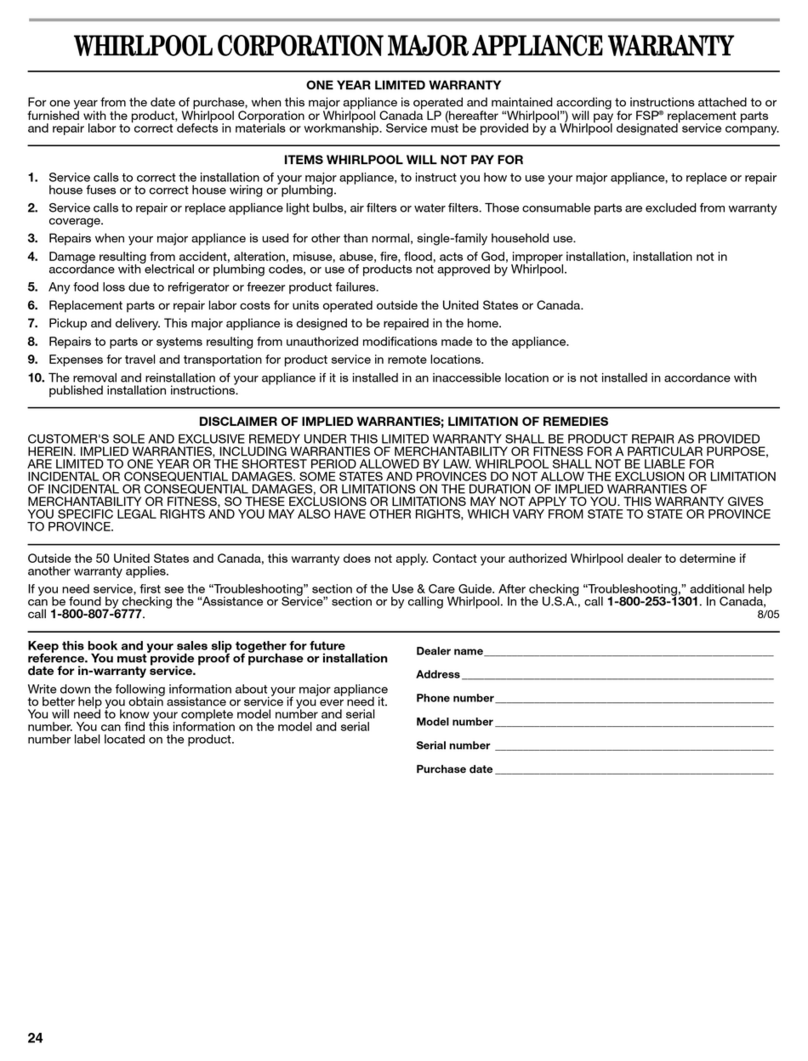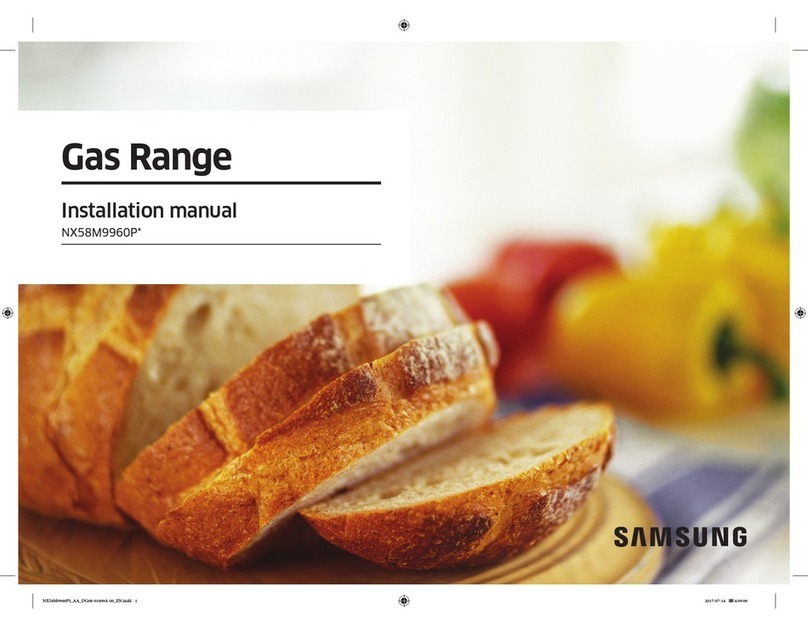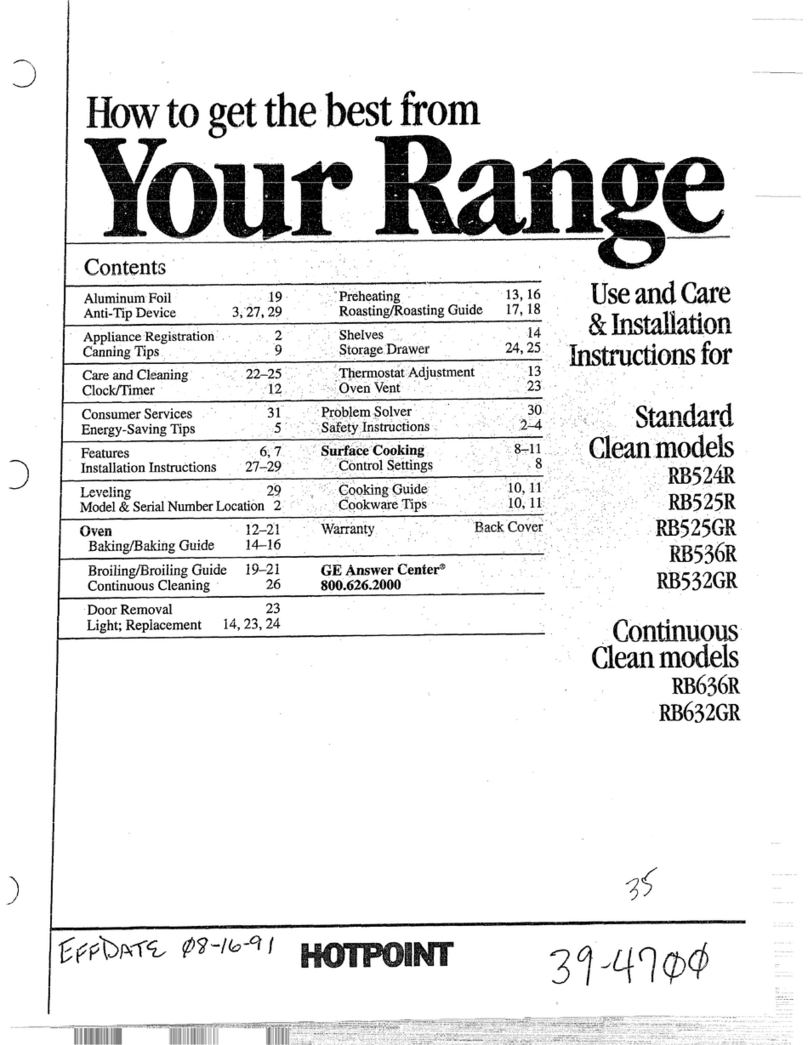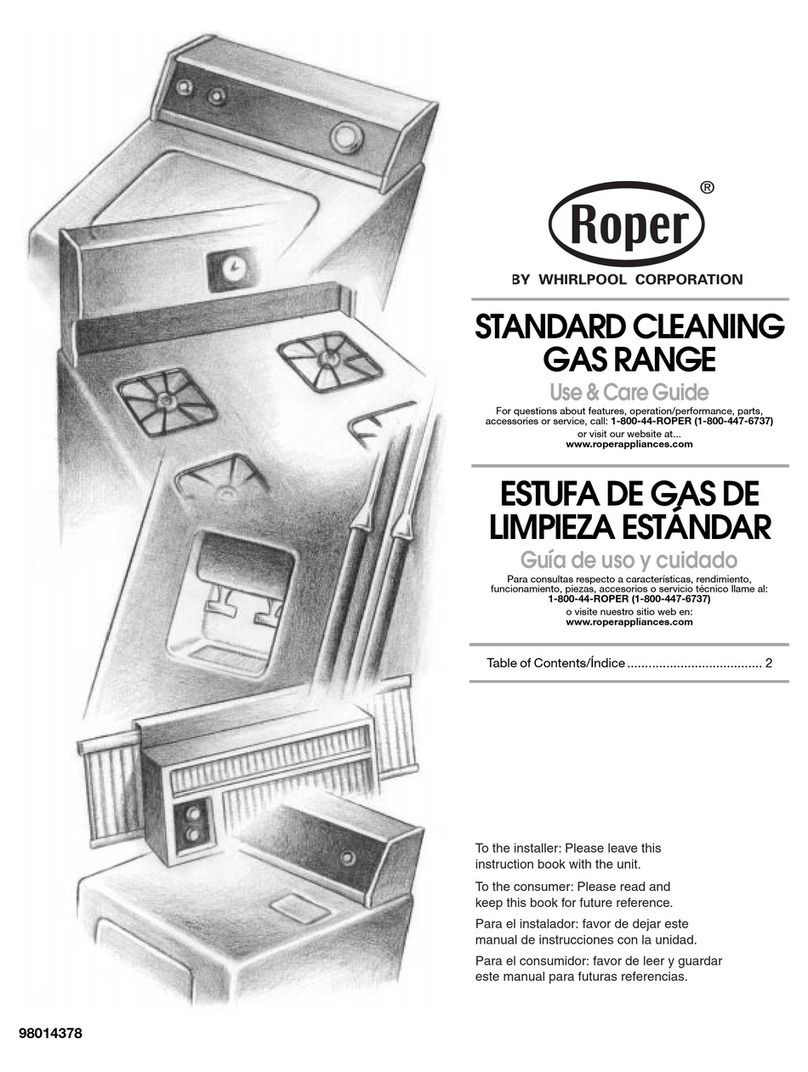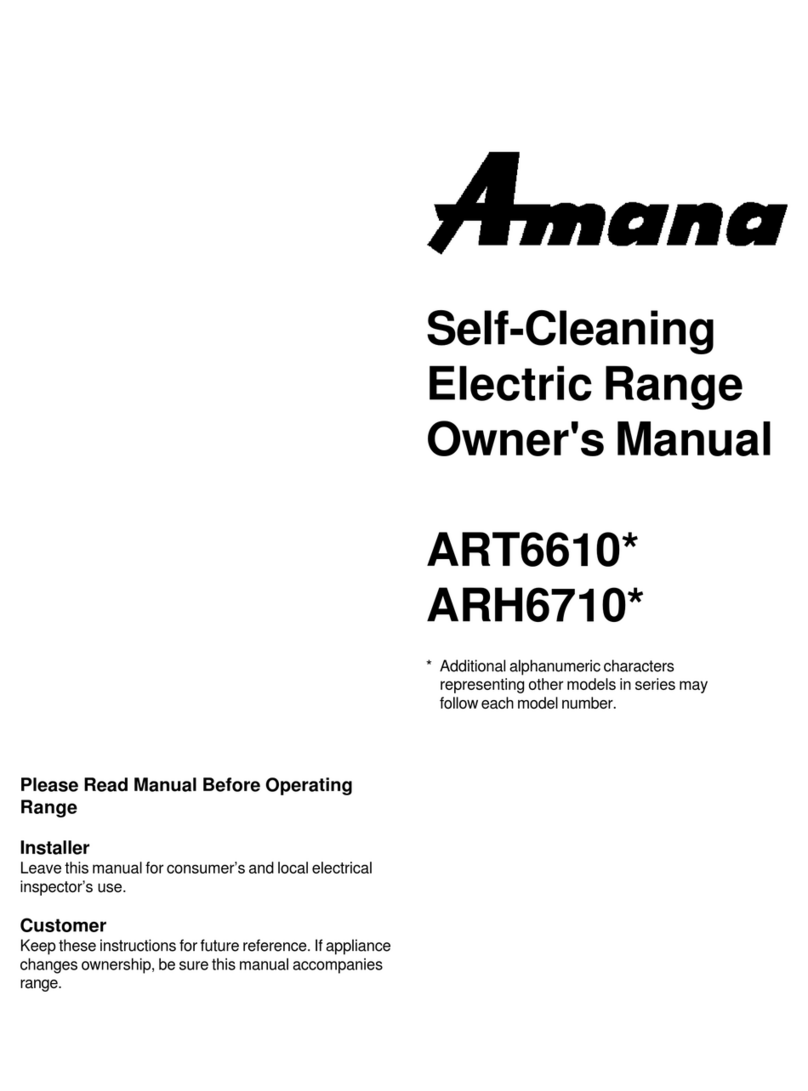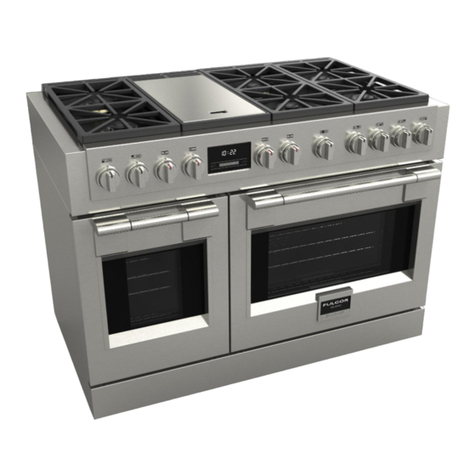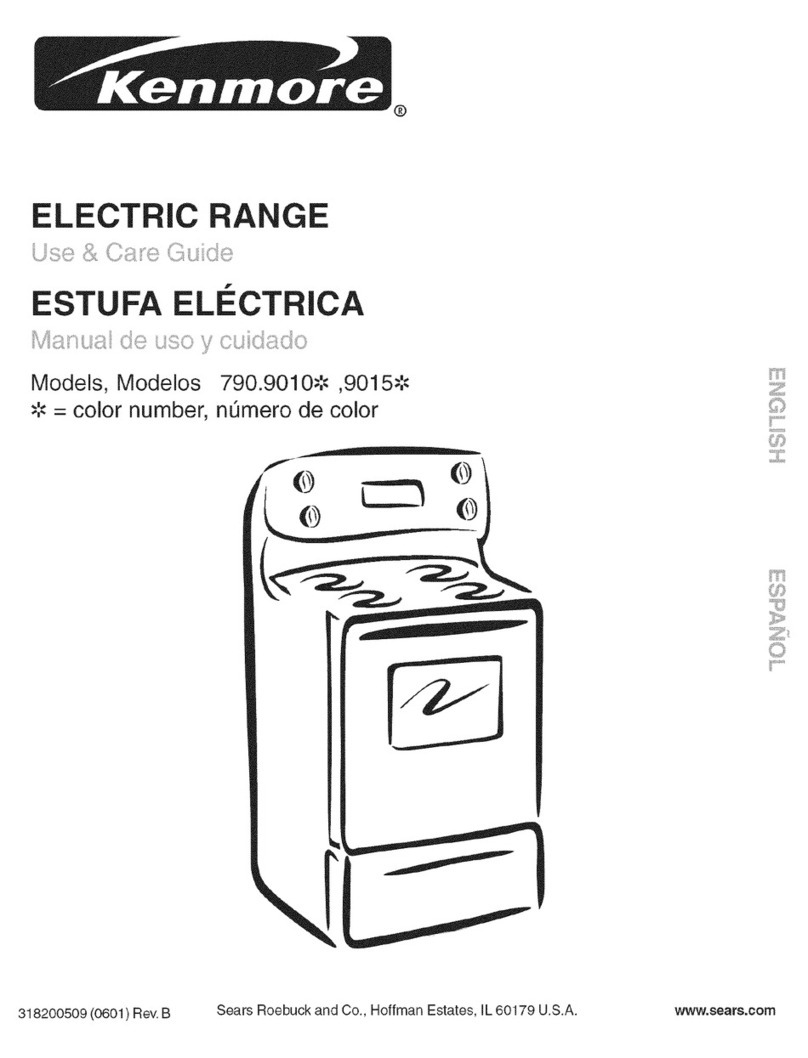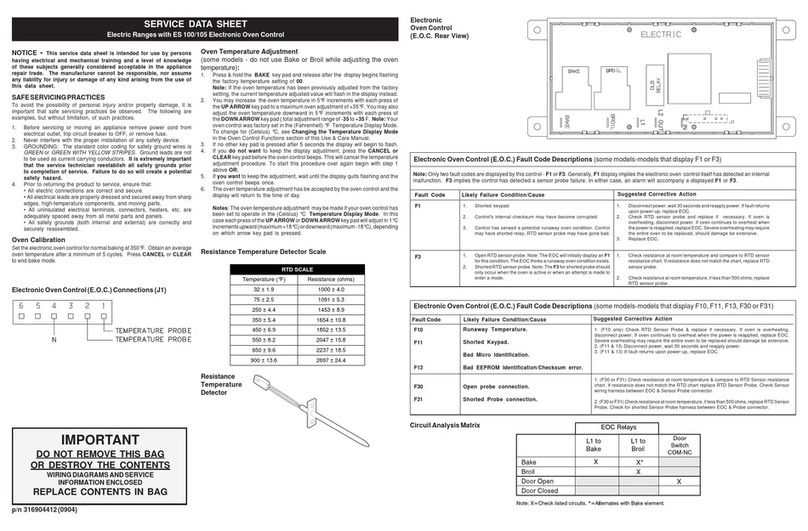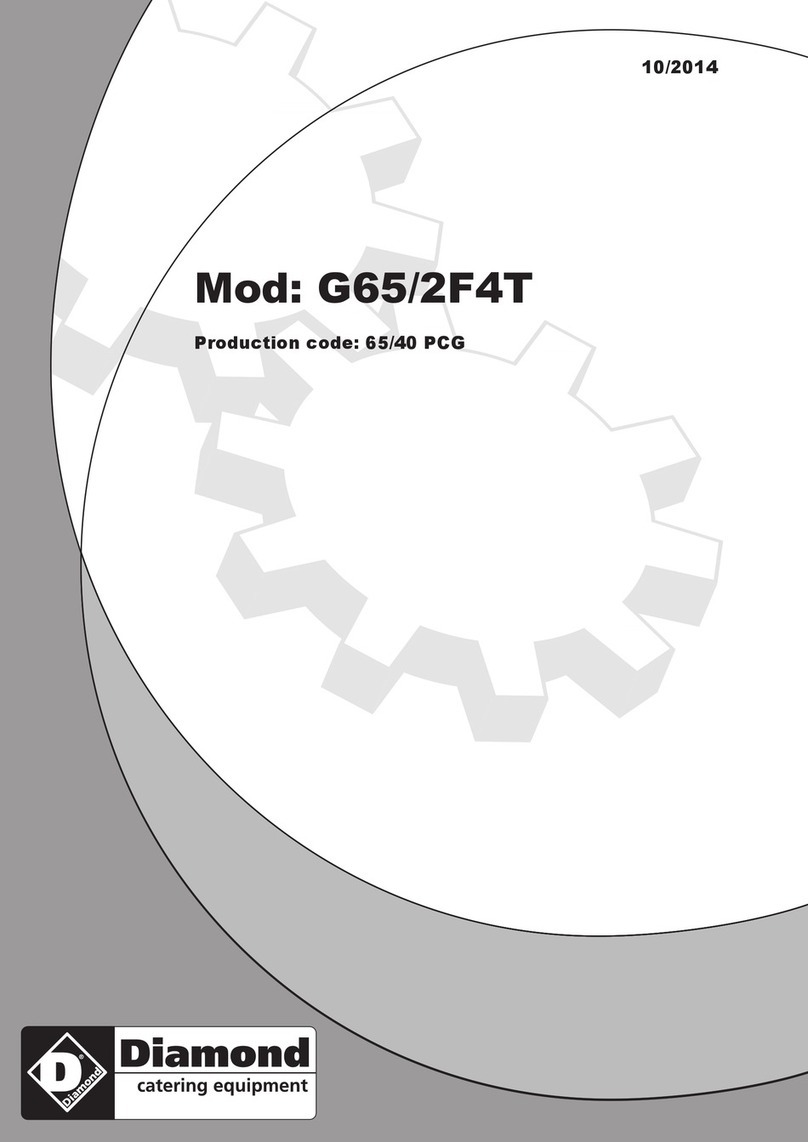■Locate the range out of kitchen traffic path
and out of drafty locations to prevent poor
air circulation.
■Be sure all packaging materials are
removed from the range before operating it
to prevent fire or smoke damage should the
packaging material ignite.
■Be sure your range is correctly adjusted by
a qualified service technician or installer for
the type of gas (natural or LP) that is to be
used. Your range can be converted for use
with either type of gas. See the Installation of
the range section.
■WARNING: These adjustments must
be made by a qualified service technician
in accordance with the manufacturer’s
instructions and all codes and requirements
of the authority having jurisdiction. Failure
to follow these instructions could result in
serious injury or property damage. The
qualified agency performing this work
assumes responsibility for the conversion.
■After prolonged use of a range, high floor
temperatures may result and many floor
coverings will not withstand this kind of use.
Never install the range over vinyl tile or
linoleum that cannot withstand such type
of use. Never install it directly over interior
kitchen carpeting.
■Do not leave children alone or unattended
where a range is hot or in operation.
They could be seriously burned.
■Do not allow anyone to climb, stand or hang
on the oven door, storage drawer, warming
drawer or cooktop. They could damage the
range and even tip it over, causing severe
personal injury.
■ CAUTION: Items of interest to
children should not be stored in cabinets
above a range or on the backsplash of a
range—children climbing on the range to
reach items could be seriously injured.
■For your safety, never use your appliance
for warming or heating the room.
■Never wear loose fitting or hanging garments
while using the appliance. Be careful when
reaching for items stored in cabinets over the
range. Flammable material could be ignited
if brought in contact with flame or hot oven
surfaces and may cause severe burns.
■Do not store flammable materials in an
oven, a range storage drawer, a warming
drawer or near a cooktop.
■Do not store or use combustible materials,
gasoline or other flammable vapors and
liquids in the vicinity of this or any other
appliance.
■Do not let cooking grease or other flammable
materials accumulate in or near the range.
■Do not use water on grease fires. Never pick
up a flaming pan. Turn the controls off.
Smother a flaming pan on a surface burner
by covering the pan completely with
a well-fitting lid, cookie sheet or flat tray.
Use a multi-purpose dry chemical or
foam-type fire extinguisher.
■Flaming grease outside a pan can be put
out by covering it with baking soda or,
if available, by using a multi-purpose dry
chemical or foam-type fire extinguisher.
■Flame in the oven or warming drawer can be
smothered completely by closing the oven
door or drawer and turning the control to
off or by using a multi-purpose dry chemical
or foam-type fire extinguisher.
■Let the burner grates and other surfaces
cool before touching them or leaving them
where children can reach them.
■Never block the vents (air openings) of the
range. They provide the air inlet and outlet
that are necessary for the range to operate
properly with correct combustion. Air
openings are located at the rear of the
cooktop, at the top and bottom of the oven
door, and at the bottom of the range under
the warming drawer, storage drawer or
kick panel.
■Large scratches or impacts to glass doors
or cooktops can lead to broken or
shattered glass.
SAFETY PRECAUTIONS
Operating Instructions
4
Safety InstructionsInstallation Instructions
Troubleshooting TipsConsumer Support
IMPORTANT SAFETY INFORMATION.
READ ALL INSTRUCTIONS BEFORE USING.
